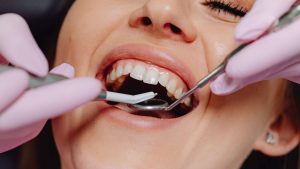When you’re faced with the decision of choosing between clear aligners and traditional braces, several factors come into play that could significantly impact your daily life and overall satisfaction. It’s essential to weigh treatment duration, cost, aesthetics, comfort, and maintenance.
Clear aligners often promise a shorter treatment time and a more discreet look, which might appeal to adults looking for subtlety. However, traditional braces could be more budget-friendly upfront. Each option has its pros and cons, making the choice highly personal. So, how do you decide which one suits your lifestyle best?
Treatment Duration
When considering treatment duration, clear aligners typically offer a shorter timeline compared to traditional braces.
You’ll notice quicker results due to the alignment efficiency of clear aligners, which can be more effective if you comply with wearing them as prescribed.
Treatment milestones are easier to track, ensuring that any necessary adjustments are promptly addressed during orthodontic follow-ups.
Patient compliance plays a significant role; consistently wearing your aligners can shave months off the total treatment time.
Age considerations also come into play, as younger patients might experience faster adjustments.
Cost Comparison
After considering the treatment duration, let’s compare the costs of clear aligners and traditional braces.
Clear aligners often carry a higher upfront cost, but they can be more transparent about hidden fees. Traditional braces might seem cheaper initially, but unexpected expenses can arise.
Both options typically offer financing options and payment plans, making the treatment more manageable. Insurance coverage varies, so check your policy to see what’s included.
Clear aligners can be a long-term investment, potentially saving on future dental work. Traditional braces may have lower initial costs, but they might require more frequent adjustments, adding to the overall expense.
Weighing these factors will help you make an informed financial decision.
Aesthetic Considerations
Considering aesthetics, clear aligners offer a more discreet option compared to traditional braces. They’re nearly invisible, making them a popular choice if you’re concerned about visibility factors. Traditional braces, on the other hand, come with various color options, which might appeal to younger patients.
Here are a few points to consider:
1. Material choices: Clear aligners are made from transparent plastic, while braces use metal or ceramic.
2. Confidence boost: Clear aligners can provide a significant confidence boost due to their low visibility.
3. Age considerations: Adults often prefer clear aligners for their subtle appearance, whereas kids might enjoy the customizable colors of braces.
4. Visibility factors: Clear aligners are almost unnoticeable, making them ideal for professional and social settings.
Comfort and Convenience
Balancing your lifestyle with orthodontic treatment, clear aligners often win out for their comfort and convenience.
They offer superior pain management compared to traditional braces, which means you’ll experience less discomfort during daily wear.
You can remove aligners when you eat, allowing you to maintain your normal eating habits without restrictions.
Additionally, clear aligners have a minimal impact on your speech, so you won’t have to worry about noticeable changes when talking.
Unlike braces, there are no metal components that might cause irritation or require activity restrictions.
Maintenance and Care
Maintaining and caring for your orthodontic treatment plays a crucial role in achieving the best results. Whether you choose clear aligners or braces, proper upkeep is essential. Here are some tips to ensure your treatment goes smoothly:
1. Cleaning Techniques: Brush and floss regularly to maintain excellent oral hygiene. Clear aligners require gentle cleaning with soap and water.
2. Dietary Restrictions: Braces mean avoiding hard and sticky foods to prevent damage. Clear aligners allow more flexibility, but it’s best to avoid staining foods.
3. Orthodontic Check-Ups: Regular visits ensure your treatment is on track, and adjustments are made as needed.
4. Emergency Repairs: Braces might need repairs for broken brackets or wires, while clear aligners are less prone to emergencies but should be replaced if lost.
Achieve Your Perfect Smile with Hand Family Dentistry
When choosing between clear aligners and braces, consider your priorities.
Do you value a shorter treatment duration or a lower initial cost? Are discreet aesthetics important, or can you handle the visibility of metal brackets?
Think about comfort—would you prefer the smooth feel of aligners or are you okay with potential brace discomfort? Maintenance matters too—easy cleaning of aligners or more meticulous braces care?
Your decision hinges on what fits your lifestyle best.
At Hand Family Dentistry, we understand that every patient’s needs are unique.
Whether you’re interested in clear aligners or traditional braces, our experienced team offers comprehensive general and cosmetic dental services to help you achieve a perfect smile.
With personalized care and state-of-the-art technology, we ensure you receive the best treatment tailored to your lifestyle and preferences.
Visit us today to explore your options and take the first step towards a healthier, more confident you.


